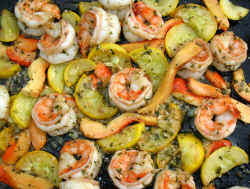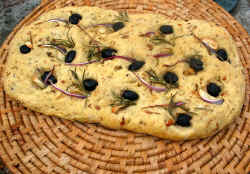|
|
Mushroom-Collecting.com A New England and Eastern Canada Edible and Medicinal Mushroom Resource |
|||||||||||||||||||||||||||||||||||||||||||||||||||||||||||||||||||||||||||||||||||||||||||||||||||||||||||||||||||||||||||||||||||||||||||||||||||||||||||||||||||||||||||||||||||||||||||||||||||||||||||||||||||||||||||||||||||||||||||||||||||||||||||||||||||||||||||||
Home
Chanterelle (Cantharellus cibarius) Black Trumpet (Craterellus cornucopioides, C. cenerius, C. foetidus) Small Chanterelles (Craterellus tubaeformis, C. ignicolor) Hedgehog (Hydnum repandum, H. umbilicatum) Horse and Meadow Mushroom (Agaricus arvensis, A campestris) Parasol Mushroom (Macrolepiota procera) Shaggy Mane (Coprinus comatus) (White) Matsutake (Tricholoma magnivelare) Blewit (Lepista nuda) Oyster Mushroom (Pleurotus ostreatus, P. populinus)
King Bolete (Boletus edulis) Boletus variipes and other. Two Colored Bolete (Boletus bicolor) Maitake (Grifola frondosa) Chicken of the Woods (Laetiporus sulphureus) Dryads Saddle (Polyporus squamosus)
Morels (Morchella esculenta, M. elata) Puffballs (Calvatia gigantea, Calvatia cyathiformis, others) Lobster Mushroom (Hypomyces lactifluorum) Aborted Entoloma (Entoloma abortivum)
Medicinal Mushrooms Maitake (Grifola frondosa) Reishi (Ganoderma tsugae, G. lucidum) Turkey Tail (Trametes versicolor) Chaga (Inonotus obliquus) Artist's Conk (Ganoderma applanatum)
Collecting, Photographing and
Cooking Collecting
Tips Evaluating
Flavor Dyeing Fabrics and Paper with Mushrooms
|
I don't care what a person may have thought of their chanterelles in bouillabaisse or their boletes in beef stew. I sometimes wonder if a report of "slight bitterness" is the result of burned butter in the sauté pan. Recently I tried Hypholoma sublateritium, the "brick cap" for the first time. It was a "good" experience but mostly as a relatively neutral conveyance for butter. I have found that some mushrooms rated "edible" may have been picked at the wrong time, or had an incorrect cooking process applied to them. There are many species that do fall into the "why bother" category. The ash tree bolete (Gyrodon meruloides), smells and tastes like fresh tilled soil.
In the table following the various common edible species are rated using four basic cooking processes. The basic processes detailed below are sautéing, tempura frying, microwave and drying. By preparing the various species in these basic ways we can learn how to best use them in more complex recipes. Rather than offering up recipes, the provided ratings and the comments on the species pages are meant to help guide your own culinary creativity. Some comments about other processes such as grilling or boiling may be found on pages of certain mushrooms. The various mushrooms are like vegetables. They have different flavors and widely varying textures, colors, moisture content and water absorbency . Hence, the various species respond to cooking processes differently. Many mushrooms only respond well to certain cooking techniques. I have seen well known TV chefs on popular television shows do absolutely dreadful things with wild mushrooms. I have heard them say things that showed they were not well versed in the mushrooms they were using. Don't bother with wild mushrooms if you are going to mix in button mushrooms (Agaricus bisporus) from the store! It's a bad idea unless you want your wild mushrooms to taste like the strong flavored agaricus. A recipe that calls for "mixed mushrooms" or just "mushrooms" is only a good recipe if you know which mushrooms mix or match well. Like David Arora says, "If you can't taste it, you waste it". Many mushrooms may be associated with an appropriate wine. I consider a chanterelle to be a white wine mushroom. Mixing chanterelles with other white wine mushrooms and matching chanterelles with foods normally associated with white wines is best. Many wild mushrooms are just too rare, subtle, and distinctive in flavor to be mixed or combined in certain ways. It makes as much sense as pouring Château Lafite-Rothschild Bordeaux into the holiday punch! There are some foods that are compatible with almost all edible mushroom species such as rice, potatoes, pasta, white sauce, cream, butter, and eggs. For safety's sake it is best to thoroughly cook wild mushrooms. There is plenty of bacteria in the outdoors and you could get sick from bacteria completely unrelated to the mushroom.
The chanterelle (Cantharellus cibarius) is a truly wonderful mushroom when sautéed but really is not that great as tempura. As a dried product it does not reconstitute well for cooking but makes a truly great powder for seasoning when used in small quantity or flavoring when used in larger quantity. Chanterelle powder added to Alfredo or other béchamel based (white) sauce is truly outstanding. The oyster mushroom (Pleurotus ostreatus or P. populinus) is a fairly good mushroom when sautéed, though it's flavor is a bit understated and the texture can be a bit chewy. When cooked with tempura batter it's goodness really comes out. Oysters have a beautiful anise aroma when first picked. This aroma is ephemeral often dissipating within a few hours. If you can pick and cook them within a short time, the tempura will retain some of that anise character. Very nice. They are not very successful as a dried product. The texture is leathery when reconstituted and as powder it is far less exciting than many other mushroom powders. Maitake (Grifola frondosa) is one of the most versatile species. It responds well to sautéing, frying, drying, and even micro waving. It has a distinctive flavor that neither overpowers or is overpowered. It has health and medicinal properties as well. It is truly excellent. King boletes (Boletus edulis) are excellent sautéed or fried but are truly great dried and reconstituted. When powdered, they impart strong flavor. The powder is great for soup, gravy, meat loaf, pasta sauce etc. Don't use too much! What about washing mushrooms? I am not of the "just brush
em off" school unless they are really clean and fresh. I do wash them.
That said, I don't float them in water since they can absorb
unacceptable amounts of water that way (especially in the gills). Sometimes a damp cloth is enough but a sink sprayer can
work well especially if you don't spray the gills (if present) and you don't overdo it. I have tried compressed air with minor success.
Compressed air can easily blow a hole in many mushrooms. The best course of action depends on the type of mushroom. A lot of moisture in
the sauté pan is not a good thing. Waterlogged mushrooms can be dry sautéed
to drive off excess water by moving them about in a dry hot pan for a
while before adding oil or butter. Sauté/Pan fry Sautéing mushrooms can be tricky. As Julia Child says, "Don't overcrowd the pan!". All mushrooms tested are sautéed (or pan fried) to the point where they are browned on the edges. Although some might prefer a "light" sauté, slight browning generally imparts richer flavor. Chanterelles, for example, create a yellow-orange juice in the pan. They should be sautéed until the juice is reduced, browned, and reclaimed. Sautéing in butter is a favored technique. That said, the amount of time and heat required to brown mushrooms can cause your butter to burn imparting a bitter flavor to the finished product. There is science to this. Browning mushrooms will not work well if you overcrowd your pan. Managing time and temperature is important to achieve consistent results browning your mushrooms. Browning is the result of reactions of amino acids and reducing sugars known as the Maillard Reaction and caramelization from the oxidation of sugars. Mushrooms are browned primarily through this Maillard Reaction browning producing hundreds of flavor compounds. Water is the enemy of the Maillard Reaction. Overcrowding and moving the mushrooms around too much will produced too much water. It is best to sauté mushrooms until nearly finished using a neutral flavored healthy oil. Use canola or a similar oil capable of withstanding higher temperatures, for this process. Add butter when nearing completion. The moisture in butter slightly deglazes the pan adding extra flavor to the finished product. Clarified butter can be used but has a bit less flavor and will not deglaze the pan. Sometimes the flavor of olive oil can be too strong for subtle flavored mushrooms and may not withstand high temperature over time. A wok can be used if you prefer using less oil. Finishing the sauté with cream can be a simple but elegant approach to making a quick sauce. Once you understand the flavor characteristics of a particular mushroom, you can choose an appropriate wine as a finish. Last summer, I sautéed a particularly succulent chicken of the woods for a group of people finishing it with Riesling wine. It was enjoyed by all and disappeared very quickly. I was dubbed the "Mushroom Maineiac". Tempura Tempura is a light batter used for frying in oil. Oil temperature of 375 F is best. I use a very basic recipe of flour, salt and a pinch of baking powder or a pre-packaged Japanese tempura mix from the supermarket. I use no milk (egg is optional) adding cold water and keeping the batter thin to give a very crispy golden layer to the finished product. Adding rice flour can give a nice texture. Using white or rice vinegar instead of water can add some zip. Batter for a black trumpet with thin tissue should be quite thin. Other mushrooms may benefit from thicker batter consistency. Microwave The microwave can be used to cook some types of mushrooms quite successfully. Others not so well. It is a very neutral approach using no added ingredients. A meaty, medium or large sized mushroom can be heated in the microwave quite quickly coming out piping hot without driving out all the natural juice. It has it's merits. I have heated boletes such as boletus bicolor and other species this way very successfully. Blewits (Lepista nuda) do well by this method. I point the stem upward so that any juice driven out is caught in the cap. A medium to large mushroom may take 20 seconds or less. You have to watch very closely. Protein molecules are long chain molecules like a straight piece of string. Heat causes these molecules to shrink and ultimately become squiggly and entangled. Too much heat will result in a tough mushroom (just like overcooked steak). Drying Mushrooms are dried at 110-125 F (50 C) in either a dehydrator or gas oven.
Often mushrooms do not fit well in a dehydrator unless you have an
expensive Excalibur I have a relatively simple gas stove by GE. Although the marks on my oven knob only go down to 200 degrees I found that setting it lower than 200 degrees I would get lower temperatures. Using an oven thermometer to determine correct temperature setting, I made a mark on my knob for 110-120 degrees. I use the oven racks with screening on top. It is easier to dry unusual sized and shaped mushrooms in the oven and I can dry much larger quantities. I acquired some additional sliding racks so I could really fill it up. It saves money too. In the fall the gas oven is contributing to the heating of my house (I have propane for heat) whereas an electric dryer is draining my bank account. Also, if you have 50+ pounds of maitake, you had better have a gargantuan dehydrator. Sun drying can be done with some species where weather permits. Black trumpets dry quickly in hot sun. A stiff wind could blow your dried trumpets away though. Air drying can be done with thinly sliced mushrooms using a needle and string to make a mushroom necklace. Dried mushrooms can be reconstituted, powdered, or even eaten dry in some cases. Use your favorite or texturally questionable dried mushrooms or leftover dried stems can make a very useful and flavorful powder. Powder can be made easily by chopping bone dry mushrooms in a blender or food processor. Take care not to breathe the dust that will waft out when you remove the cover. Powders impart a lot more flavor than dried whole mushrooms so you need to be careful about how much powder you use. Porcini/king bolete powder is very strong. I ruined a chicken dish by getting carried away. Duxelles Sometimes you can have way too many mushrooms and making duxelles is a way to solve that problem. Duxelles is a paste used to flavor soups, as a base for sauces, as a garnish, or stuffing. Escoffier's recipe for duxelles is made by finely chopping mushrooms or leftover stems and peelings and sautéing them in butter with onions, adding nutmeg and parsley or other spices. Julia Child's recipe leaves out the onions. You might also consider using shallots, garlic, wine, or other spices. Some mushrooms may need to have some moisture removed out by wrapping them in cloth and squeezing before cooking. Duxelles can then be frozen. Use ice trays or a muffin pan to freeze them into small blocks that can be wrapped individually in plastic wrap for later use.
Summary The species summary below is graded by number from 1-100 for each process.
There are a few listed here that have no page at this time. Obviously, these opinions are somewhat subjective but tasting is often done with
friends and relatives.
The mushroom species are matched with particular wines and by extension, the foods you would normally match with these wines. Below find a summary.
Copyright 2012 Mushroom-Collecting.com. All rights reserved. Use of this site will constitute your acceptance of the disclaimer. |
|||||||||||||||||||||||||||||||||||||||||||||||||||||||||||||||||||||||||||||||||||||||||||||||||||||||||||||||||||||||||||||||||||||||||||||||||||||||||||||||||||||||||||||||||||||||||||||||||||||||||||||||||||||||||||||||||||||||||||||||||||||||||||||||||||||||||||||
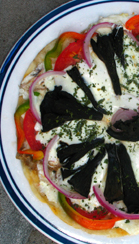
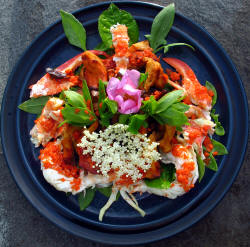
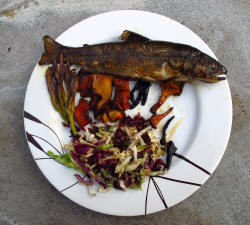
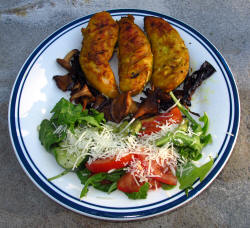
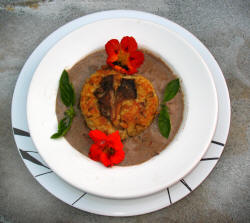
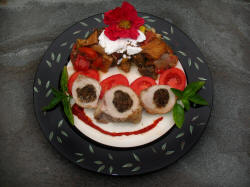
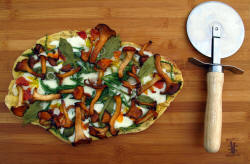
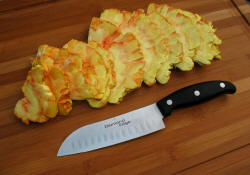
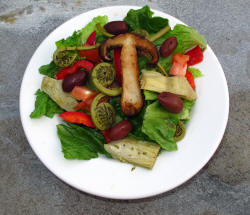
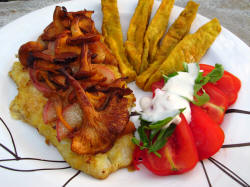
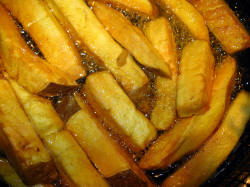
 or similar
or similar 
